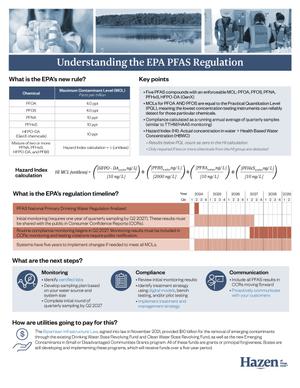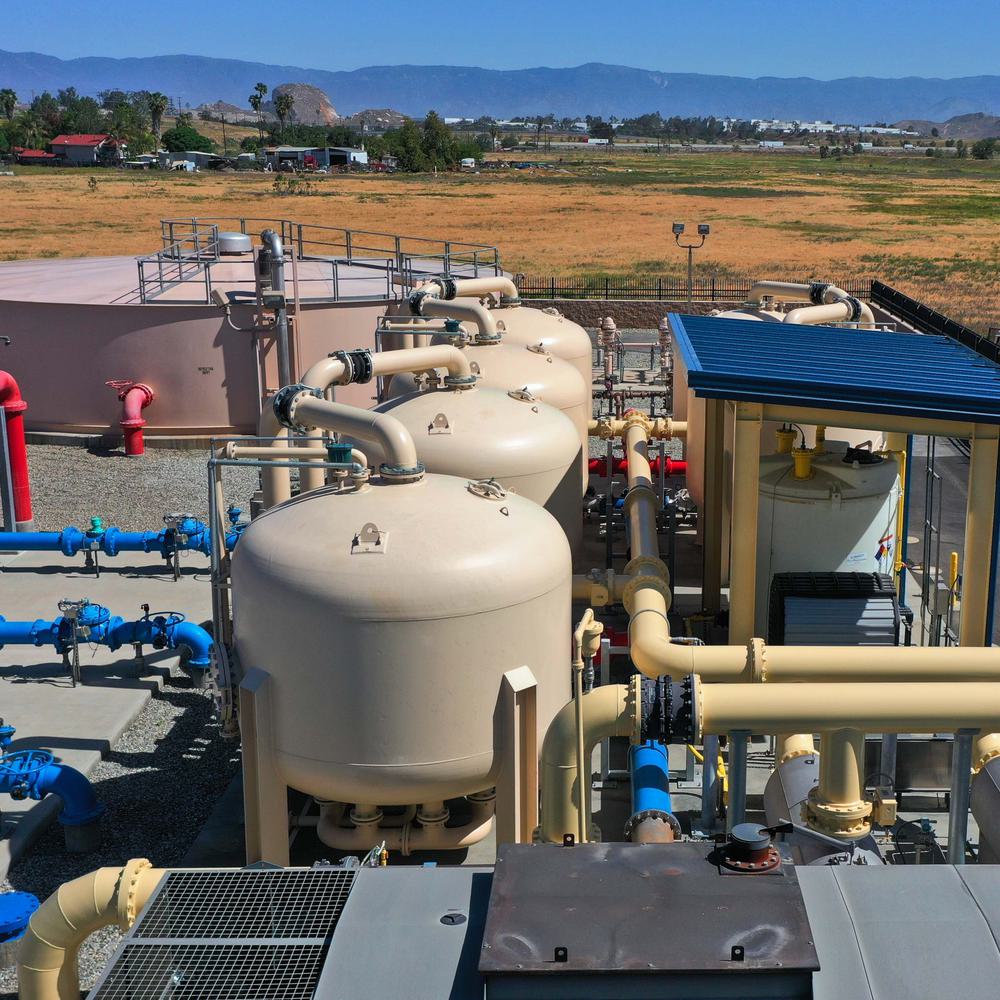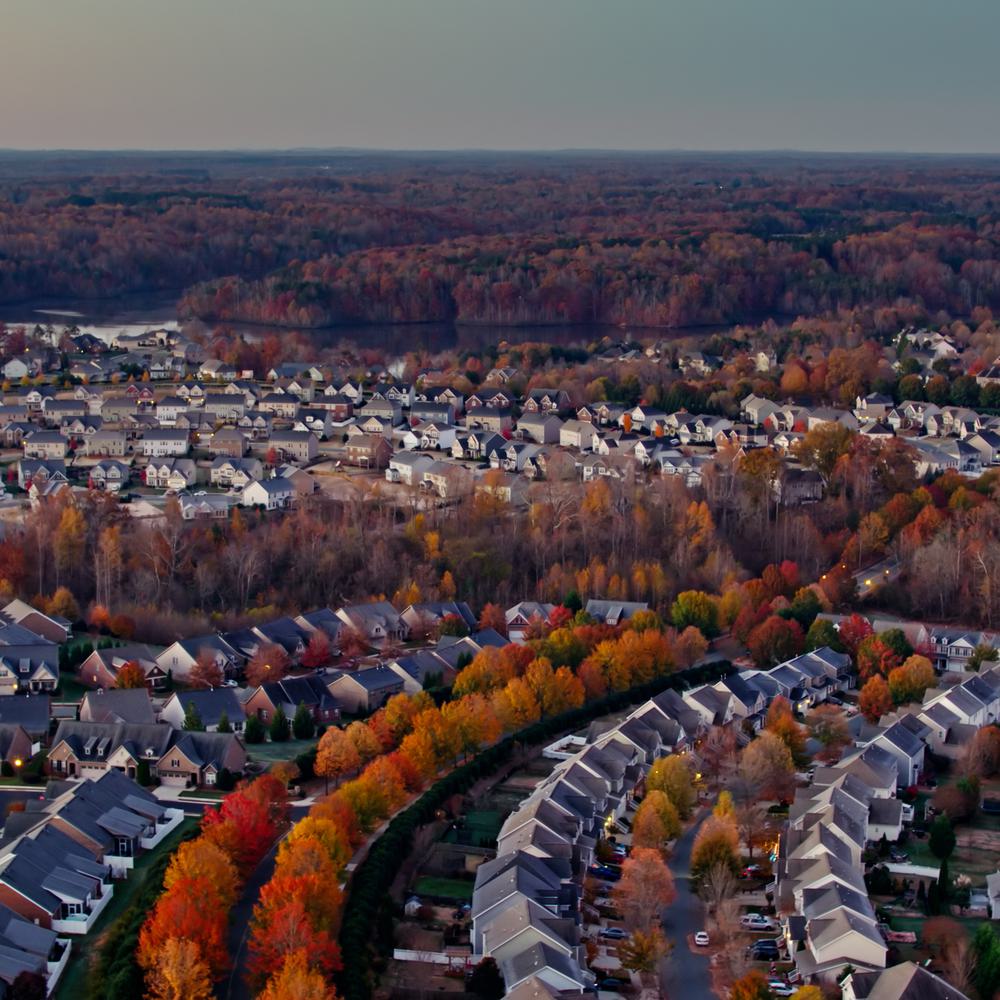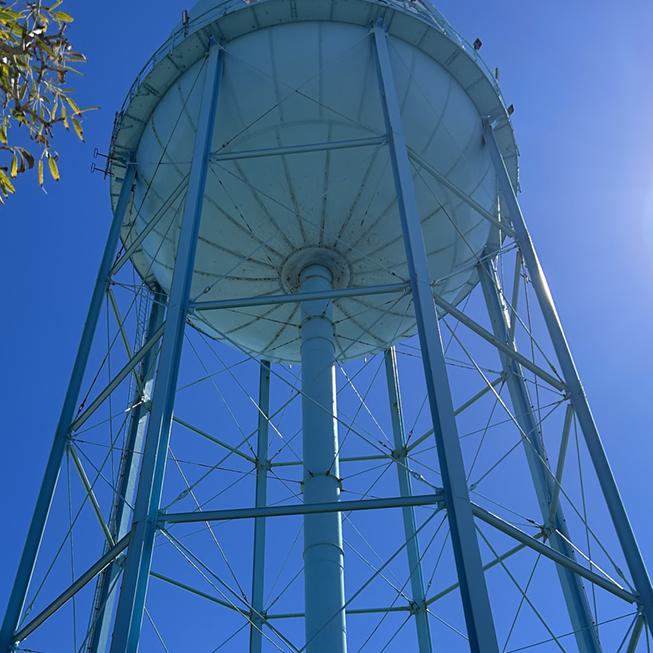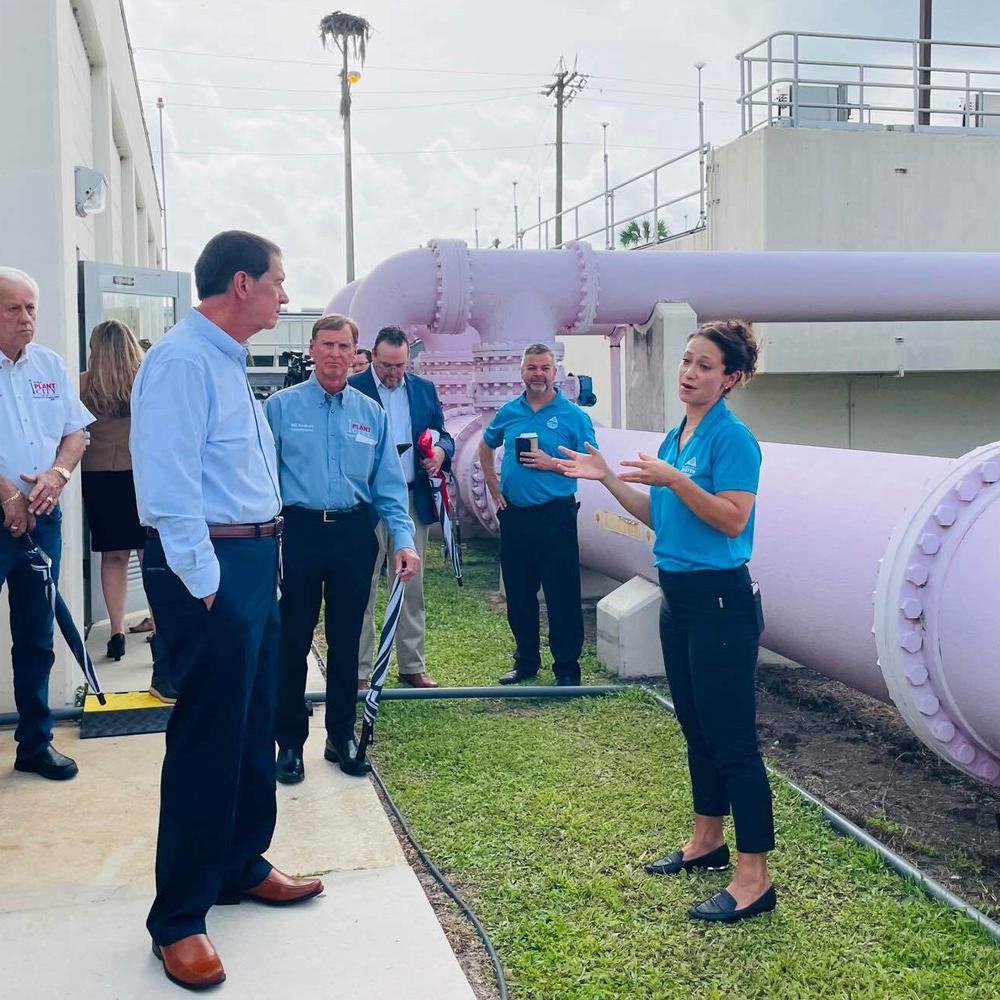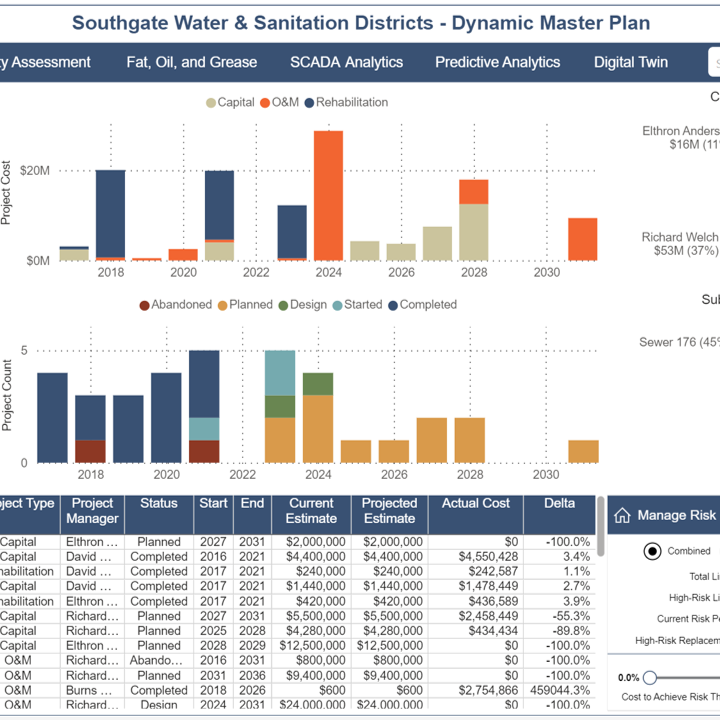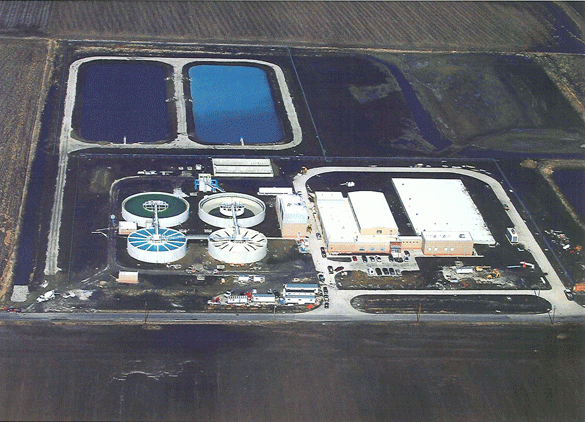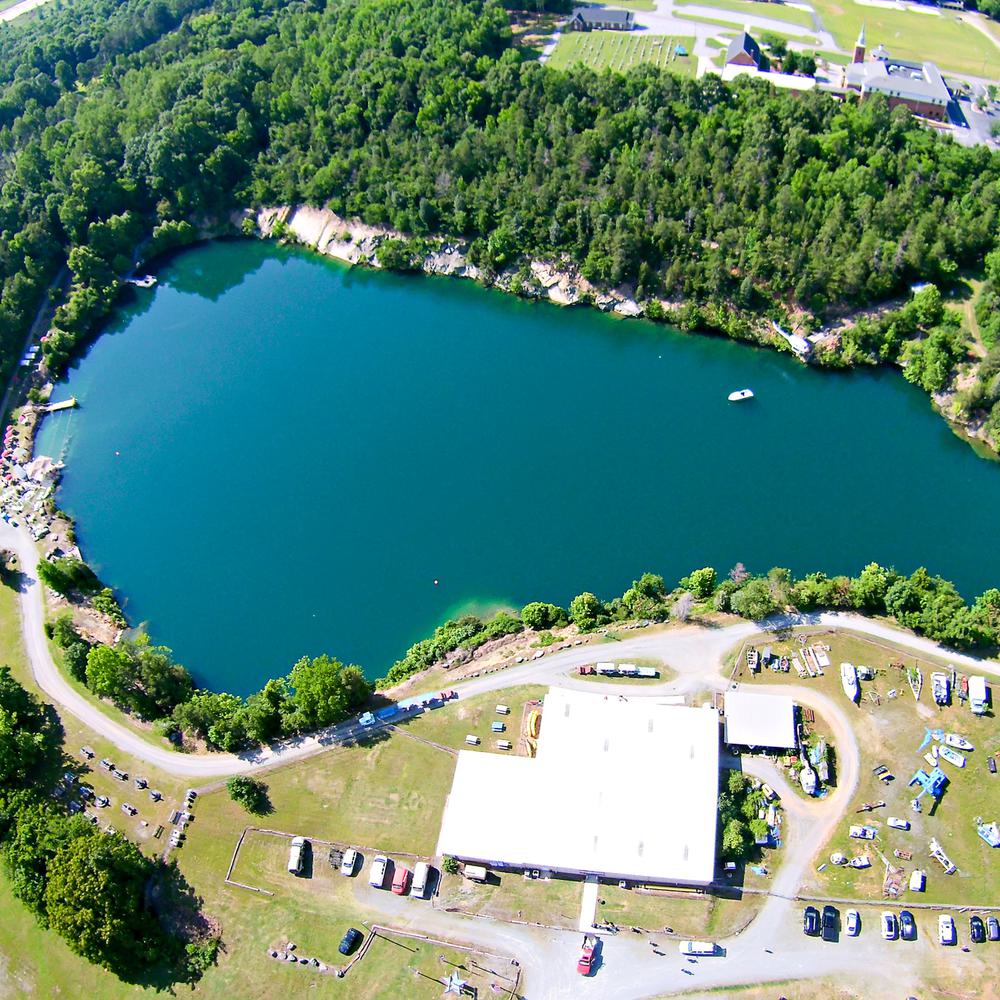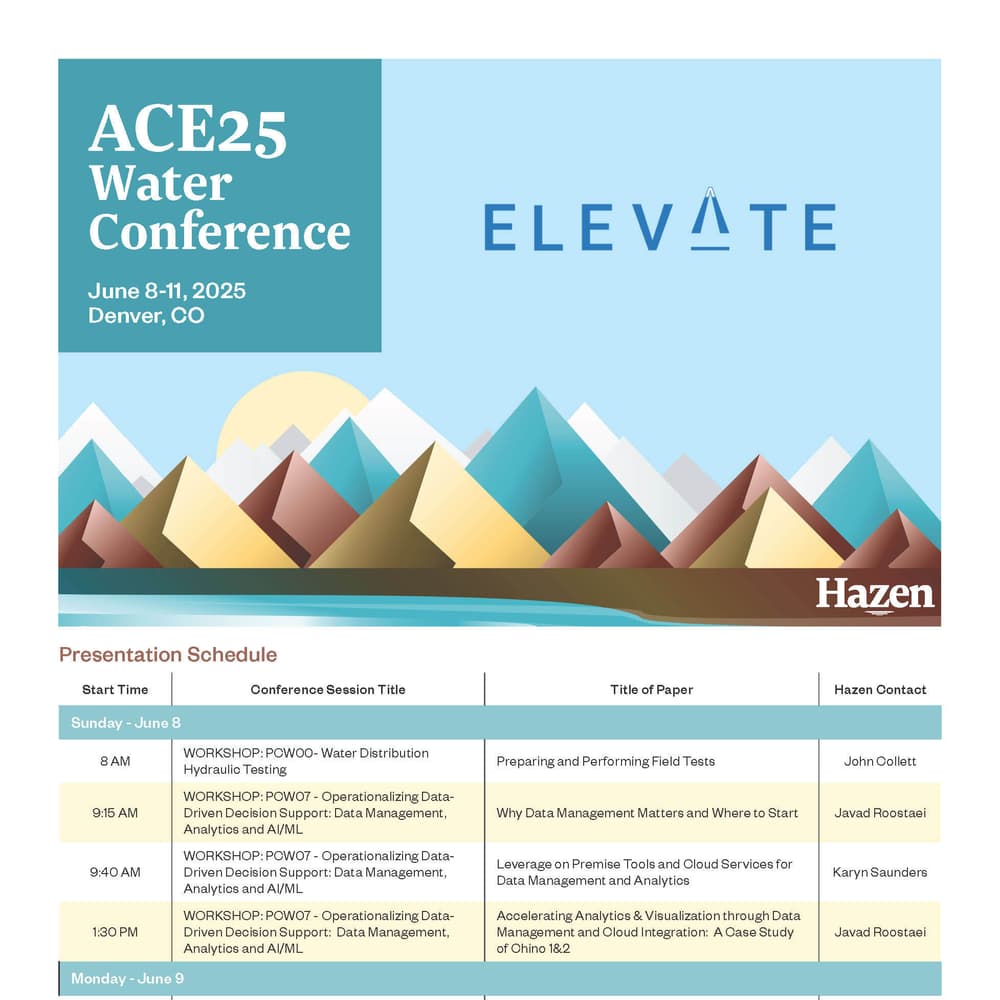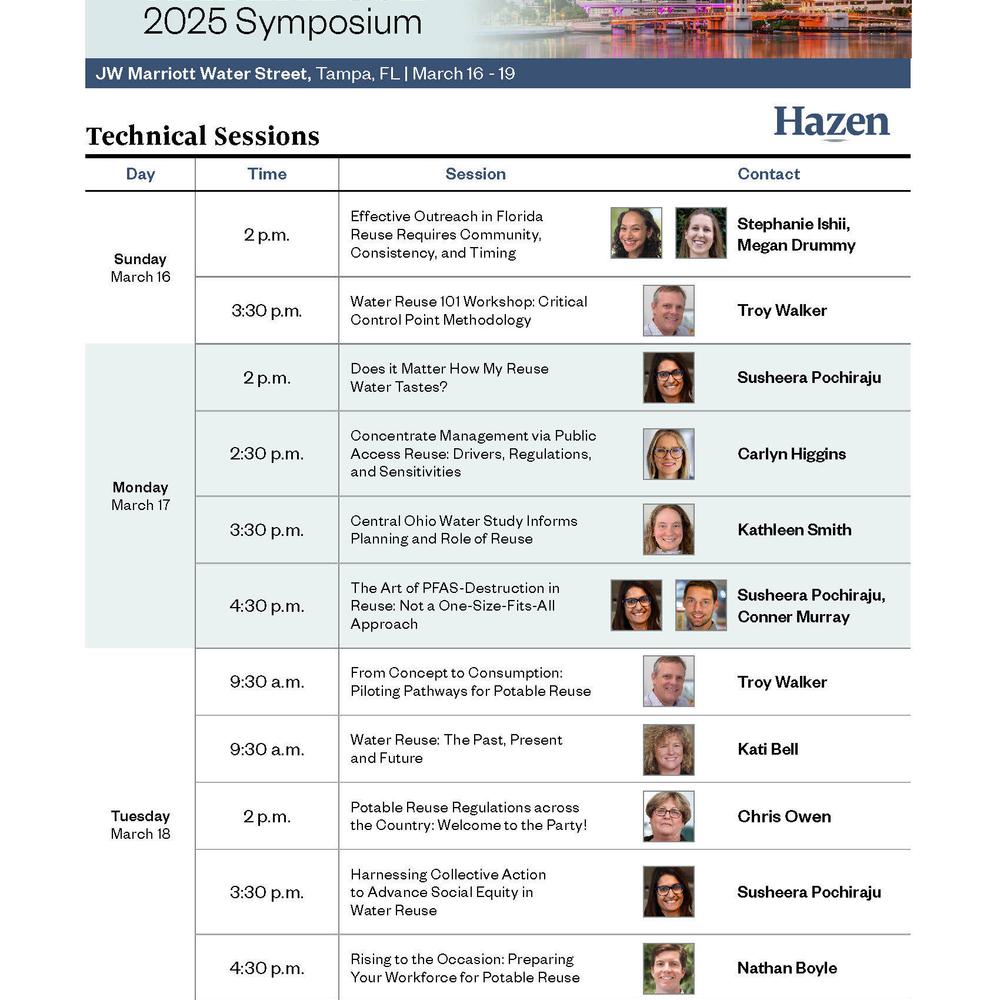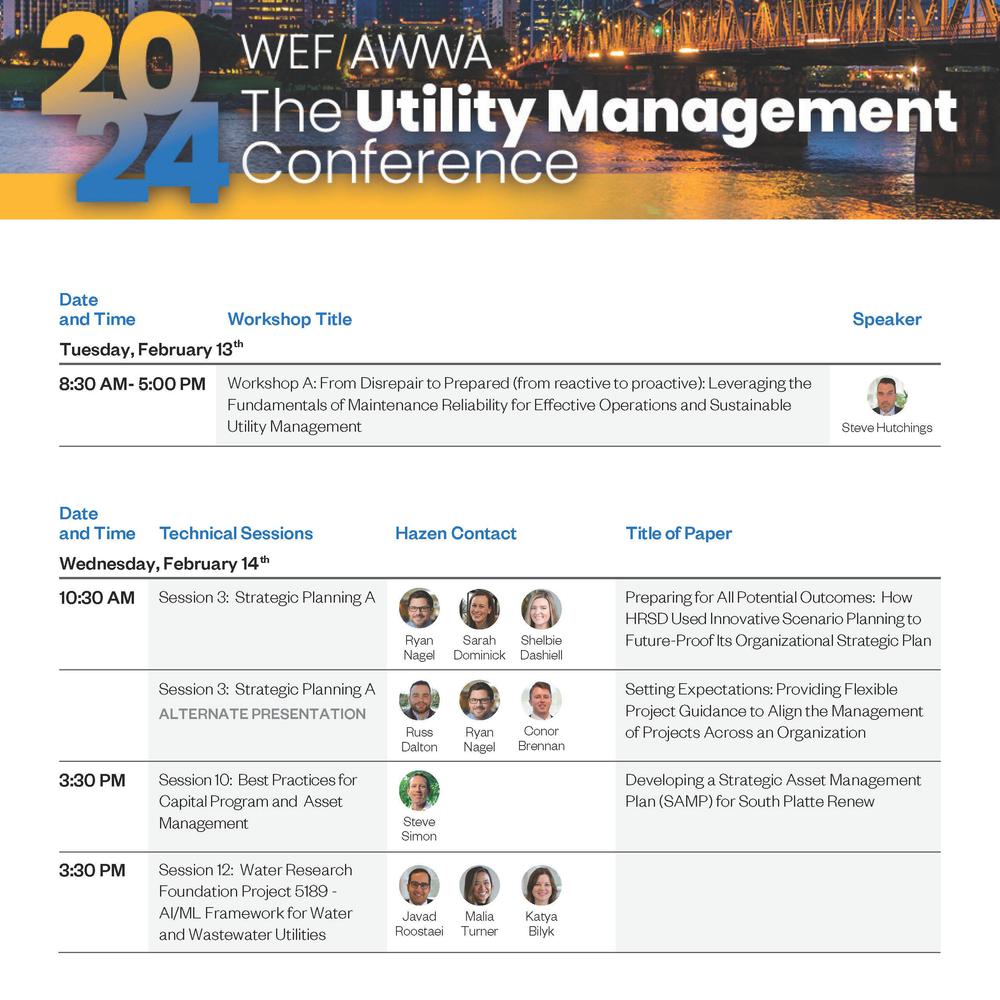Emerging Solutions for PFAS Treatment
There’s never been a group of emerging contaminants quite like PFAS. As the EPA finalizes a drinking water rule for the chemicals, utilities across the country are finding solutions to the steep challenges they pose.
Several years ago, when the City of Sanford, North Carolina, began testing its drinking water for a group of synthetic chemicals called per- and polyfluoroalkyl substances (PFAS), Victor Czar didn’t think there was any cause for concern.
At that time, the Environmental Protection Agency (EPA) recommended a combined limit of 70 parts per trillion in drinking water for two PFAS compounds called PFOA and PFOS. The recommendation wasn’t enforceable, and Sanford’s PFOA and PFOS levels were generally coming in below it.
Then came March 2023. That month, the EPA proposed much stricter—and enforceable—limits of 4 parts per trillion each for PFOA and PFOS in drinking water. The limits were finalized just over a year later, in April 2024, along with limits of 10 part parts per trillion each for three other PFAS compounds (PFNA, PFHxS, and HFPO-DA, which is often called GenX).

In the 2010s, scientists detected PFAS in North Carolina’s Cape Fear River (above), including a previously unknown chemical now called GenX. The discovery—which happened in a more industrial area east of Sanford—put the river on the frontline of the country’s PFAS challenges.
Sanford, a city of 30,000 in central North Carolina, pulls its water from the Cape Fear River, one of the state’s longest and largest river systems. The PFAS concentrations in the water from the river were low, but not that low, said Czar, the assistant city manager.
“When they drop it to 3 or 4 parts per trillion or wherever they’re going to land, everybody in America’s going to have a problem,” he said, laughing with an expression somewhere between a grin and a grimace.


He was hardly exaggerating. Since their development less than a century ago, PFAS have become a sort of Swiss Army knife for commercial manufacturing. They make mascara water-resistant, carpets stain-resistant, workout leggings sweat-resistant, firefighting foam heat-resistant, and nonstick pans, well, non-sticky. As their uses have expanded, so has the number of chemicals within the PFAS family: An EPA database of unique chemicals with features characteristic of PFAS expanded by more than 200%, from under 5,000 to almost 15,000, between 2018 and 2022, the most recent available year.
PFAS, often called “forever chemicals,” are used in a vast array of industrial and commercial products, from aqueous firefighting foam (above left) to mascara (above right).
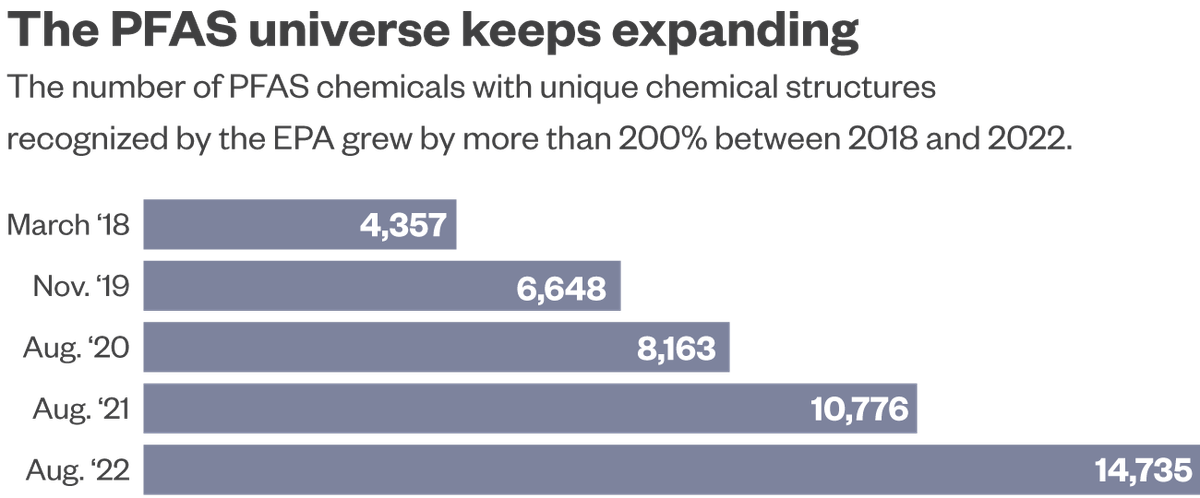
Thanks in part to the chemical bonds that make them so durable, PFAS also don’t break down easily in the environment. And like microplastics, they’re showing up almost everywhere scientists look, from human blood to sea ice. The EPA’s PFAS rule, a response to research linking some PFAS compounds to cancer and other health risks, requires the lowest detectable concentrations for PFOA and PFOS.
“It’s the lowest level that the EPA has confidence that laboratories can measure. And it’s really, really low,” said Erik Rosenfeldt, Hazen’s drinking water practice lead. “I don’t think anything else in drinking water is regulated on a part-per-trillion level. These levels are barely above background levels measured in rain at this point.”
Limits that low, for chemicals that pervasive, could force thousands of water providers across the country to implement PFAS removal systems, which don’t come cheap. The American Water Works Association estimated it would cost them more than $3.8 billion per year to remove PFOA and PFOS to the limits in the proposed rule. The newly finalized regulation gives utilities just five years to comply, regardless of their size.
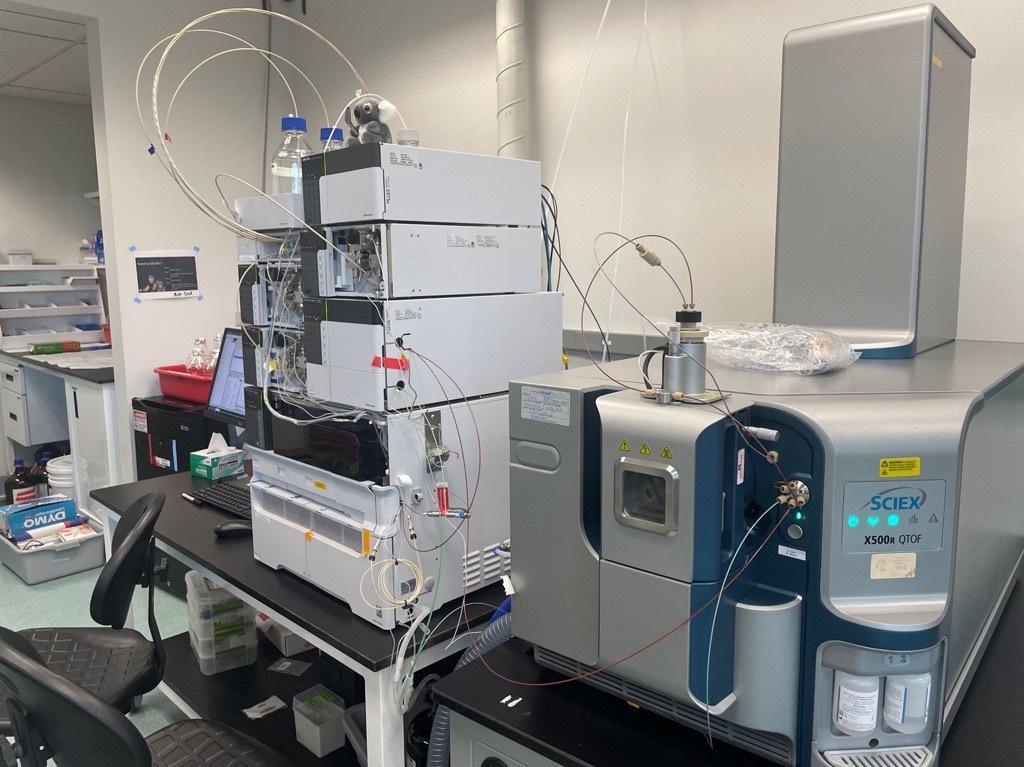
Detecting PFAS at the parts per trillion level in drinking water requires advanced laboratory instruments such as the above machines, which are used to perform liquid chromatography (left) and tandem mass spectrometry (right) at Colorado School of Mines.
Asked what he thought of all that, Czar pivoted to the question he’d rather focus on.
“I’m in charge of parks, I’m in charge of streets, I’m in charge of picking up the trash. I’m in charge of making sure all the [city’s] cars are fixed, the water plant is running—I’ve got a lot of things going,” he said. “What am I supposed to do tomorrow?”
Sanford is one of multiple utilities that have, with Hazen’s help, found answers to that question when it comes to PFAS removal. Using innovative modeling tools and experts in everything from PFAS treatment design to grant applications, we’ve helped them overcome tight deadlines and tight budgets to find PFAS strategies customized to their unique needs. These utilities offer proof that while solutions can be challenging to find, they’re more than possible.
Make It Fast
When Conner Murray joined Hazen as an intern three years ago, Rosenfeldt handed him an obscure EPA spreadsheet and told him to see what he could do with it. It was a model for estimating the costs of treating water with granular activated carbon (GAC), a treatment technology often used for PFAS removal.
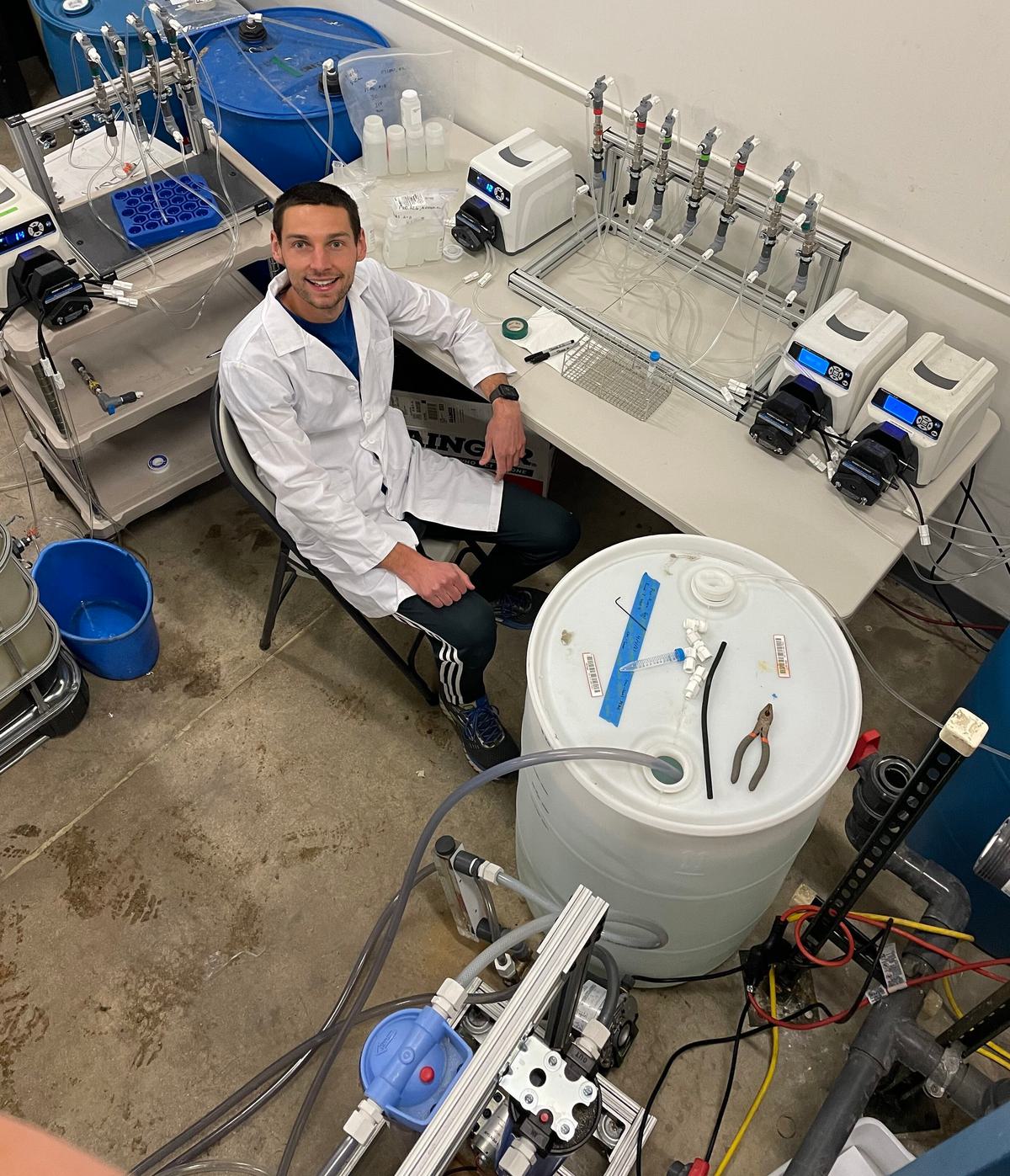
During his PhD at Colorado School of Mines, Conner Murray (left) tested the ability of three water treatment techniques—granular activated carbon, ion exchange, and Fluoro-Sorb—to remove PFAS from groundwater.
Murray had just spent the past five years researching PFAS treatment techniques for an environmental engineering PhD. Even so, the spreadsheet wasn’t easy to get the hang of. It had 25 tabs across the bottom, filled with wonky cost assumptions and calculations for things like “Regenerated GAC storage basin width” and “R-value for ceilings.”
But the model was “actually quite good,” Murray said. He found ways to make it better—clarifying assumptions and outputs, updating dollar values—until it was something Hazen could confidently use in real-world projects.
“I didn’t realize that 18 months later, this was going to be a major pillar of Hazen’s PFAS strategy,” said Murray, who’s now a Denver-based engineer involved in PFAS projects across the country.
The cost model soon became part of a suite of digital tools Hazen is using to help utilities more quickly decide what PFAS treatment strategies might serve them best. When they’re starting to look at all the options, Murray said, they often get “overwhelmed with the number of alternatives” they could consider.
The traditional way to vet a treatment option is to physically test it. Testing often starts with a bench-scale system (a small setup in a lab) before moving to a pilot system (a bigger but still not full-size system). All of that can easily take six months to a year and cost hundreds of thousands of dollars, Murray said. And it’s just the first few steps in designing, building, and implementing a treatment system.
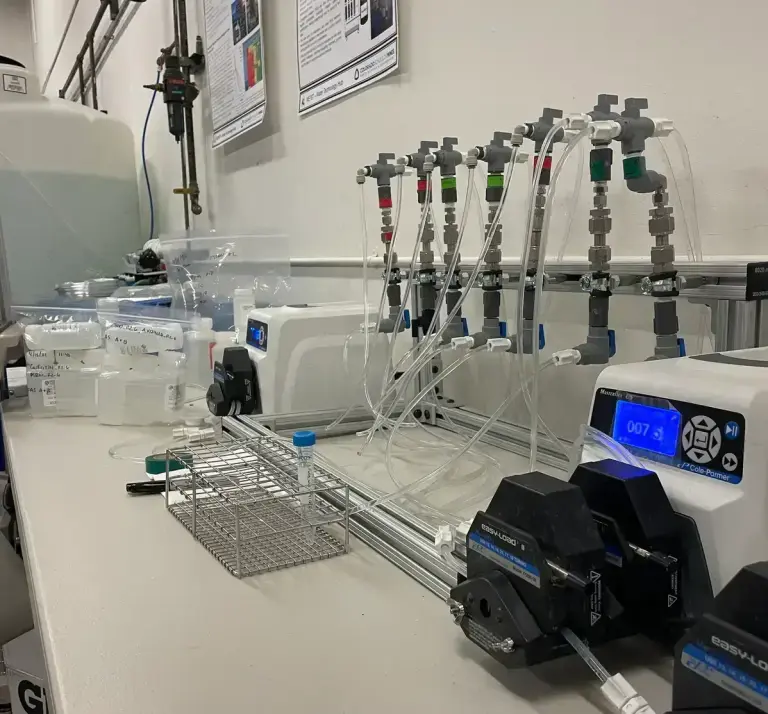
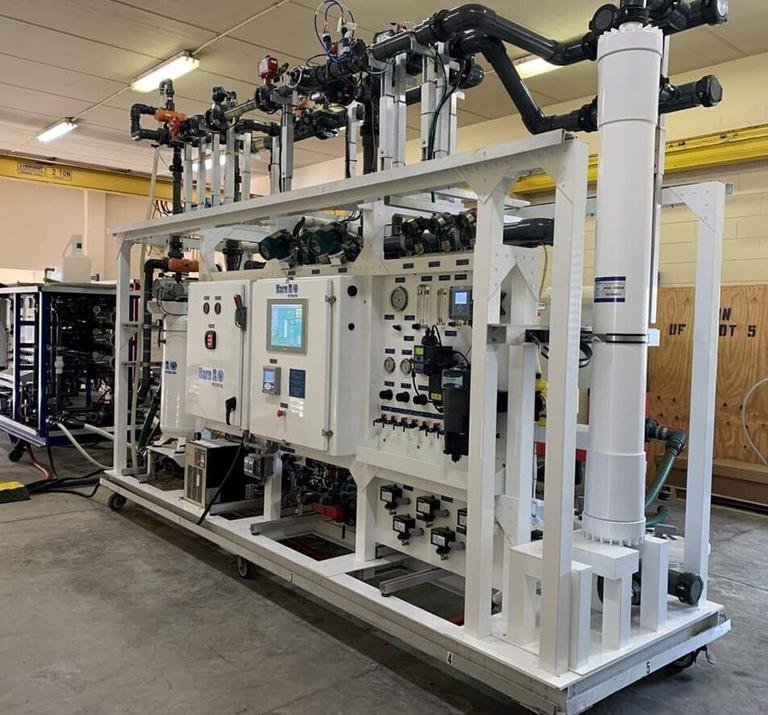
In March 2023, a utility in the Midwest didn’t have that kind of time. It was in the middle of a complex water treatment project with narrow deadlines when it detected PFAS in its drinking water. Like Sanford, the utility’s PFAS concentrations were low, but higher than what the new proposed rule—announced earlier that month—would require.
“This utility wanted to know whether they would have to take an already very complicated plant and add another treatment technology, for PFAS removal, onto the back end of it,” said Hazen Vice President Bret Casey, a drinking water expert who was managing the project. “And they wanted to know how much more the project could cost if they did.”
Casey tapped Murray and Rosenfeldt for help. First, they ran a Hazen model that combines hundreds of datasets from PFAS treatment systems across the country with an advanced machine learning algorithm. Using that information, plus a few key metrics from the utility, the tool quickly estimated the effectiveness of GAC for the utility’s source water quality and treatment goals. Murray and Rosenfeldt plugged those estimates into the cost estimation model Murray had developed.
“We did the initial estimations in a couple of days and got them firmer numbers within a month,” Murray said. “Those results will be refined further through pilot-scale experiments. And we were as confident about the machine learning model as we would be about bench-scale tests.”
Bench-scale treatment systems like the one above left are used to screen treatment methods in lab settings. Pilot-scale systems like the one above right are larger (but not full-scale) and are typically installed at drinking water plants to assess site-specific treatment performance.
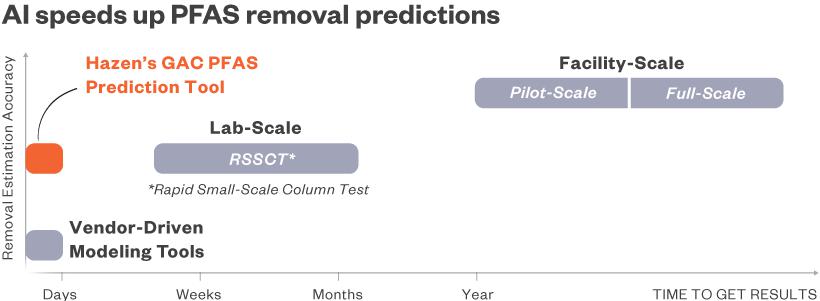
Utilities interested in granular activated carbon (GAC) for PFAS removal want to know how well the technology will work for them. GAC vendors sometimes offer estimates, but those can be unreliable. Lab tests are more accurate but can take months. Onsite testing (most accurate) can take years. Hazen GAC’s machine learning model can predict PFAS removal performance in days, producing estimates that rival the accuracy of lab tests while shaving months off of the decision-making process.
The firm has additional PFAS treatment models that can do everything from suggest the optimal GAC treatment setup to estimate cost inflation for construction materials over the course of a multi-year project. Just in the past year, Murray said, Hazen has used the machine learning model for more than 30 utilities across the country. He expects the demand to keep rising.
Make It Affordable
Murray said that given how expensive PFAS removal technology can be, it’s crucial to help utilities anticipate the costs of PFAS removal as early as possible—not just for their sake, but for the sake of their customers. In many cases, utility ratepayers will foot the treatment bill, he said.
There are some new sources of cash coming online. Last summer, 3M, a manufacturer of many materials containing PFAS, agreed to pay up to $12.5 billion to municipalities with PFAS-contaminated drinking water, one of multiple such settlements reached in 2023. But 3M’s billions will be paid out over 13 years and split between hundreds of communities. And while the Bipartisan Infrastructure Law committed $9 billion to projects to remove PFAS from drinking water, that’s a drop in the bucket, said Hazen’s Tim Devine.
“I’m expecting it to be extremely competitive to get funds from that pool of money,” said Devine, who leads Hazen’s economic and financial services practice group.

Money topped Victor Czar’s concerns when he was thinking through how to address the trace PFAS levels in Sanford’s water. His city had lucked out with its timing, he said. By the time the EPA announced the new proposed PFAS limits in March 2023, Sanford was already considering a new GAC system: It was planning to expand its water treatment plant, which can currently treat up to 12 million gallons per day (mgd), to accommodate rising demand, and Czar wanted GAC in the upgrade to address other water quality needs.
But Sanford’s poverty rate is 21.5%, almost twice the North Carolina average of 12.8%. Czar said he’s sensitive to making sure the city’s water stays affordable for its residents.


“This isn’t just a bunch of numbers I’m putting down here,” Czar said of what it’s like to plan this kind of expansion. “This is people’s lives and livelihoods, and the ability of the town to grow, all those kinds of things. You’ve got to pay attention to it.”
For both the GAC system and the entire expansion project, Sanford needed funding help. Its first solution was to talk to its neighbors. North Carolina has experienced sharp population growth in recent years, and Czar knew other towns and counties in the area were eyeing drinking water system expansions to keep up with their own rising demand. He began floating the idea of a regional treatment facility that could save money for other utilities as well as Sanford.
At first, it seemed like everyone listened just to be polite, Czar said. But their interest became serious as the potential costs of such a project became more tangible. Hazen’s machine learning and PFAS treatment cost estimation tools were still in development, but Tim Devine built a digital dashboard that was crucial in facilitating those conversations. The municipalities could manipulate a wide range of variables, from the size of the expansion to the method used to divvy up costs, to see how different choices could impact the overall project and its price tag for each potential player.
The Sanford Water Filtration Facility (above left) can produce up to 12 million gallons per day (mgd) of drinking water for the city (above right, during a music festival). But it will soon be expanded to a 30 mgd regional facility serving Sanford and four other neighboring municipalities. Source: Water facility, City of Sanford; music festival, Visit Sanford.

Hazen designed a Microsoft Power BI dashboard to help the City of Sanford and neighboring municipalities weigh the many factors that could influence the costs of a new regional drinking water treatment plant. The above screenshot shows just a few of those variables—for example, potential bond rates for loans, grant funding won, and the duration of the plant’s construction.
“I think the dashboard gave them a level of comfort that the costs were being assigned fairly and equitably, and they could say, ‘Ok, how much water do I want?’” said Paul Weeks, Sanford’s utilities and engineering director.
Three nearby towns and a county decided to partner with Sanford to expand the facility from 12 mgd to 30 mgd. Sharing costs with them saved Sanford alone tens of millions of dollars, Czar said.
With help from a Hazen team led by Devine, the project also won $192 million in grants, low-interest loans, and no-interest loans, most of which came from federal funds managed by North Carolina’s Department of Environmental Quality. Roughly $130 million went to Sanford. Devine attributes the wins to developing a strong narrative for each application, as well as submitting applications early and often.
“We always tell clients to get the application in early, even if your project is still at the conceptual level, because the more times you go through funding cycles, the higher your chances are of getting funded,” Devine said.
Asked what difference the $192 million will make for the customers of all those utilities, Devine opened a blank spreadsheet and began typing.
“These are super rough estimates,” he said, but over the next 30 years, he calculated that it could collectively save the utilities more than $6.5 million a year, or close to $100 a year per customer account.
Emerging Contaminants, Emerging Solutions
During a tour of the Sanford Water Filtration Facility in January, Czar pointed to a row of pines swaying just beyond the perimeter fence. Sanford and its partners are close to publishing the first request for construction bids for the expansion. In a few years, he said, the trees will be replaced by a building containing the new granular activated carbon system. It will help ensure that PFAS concentrations in the finished water hover below what today’s technology can detect.
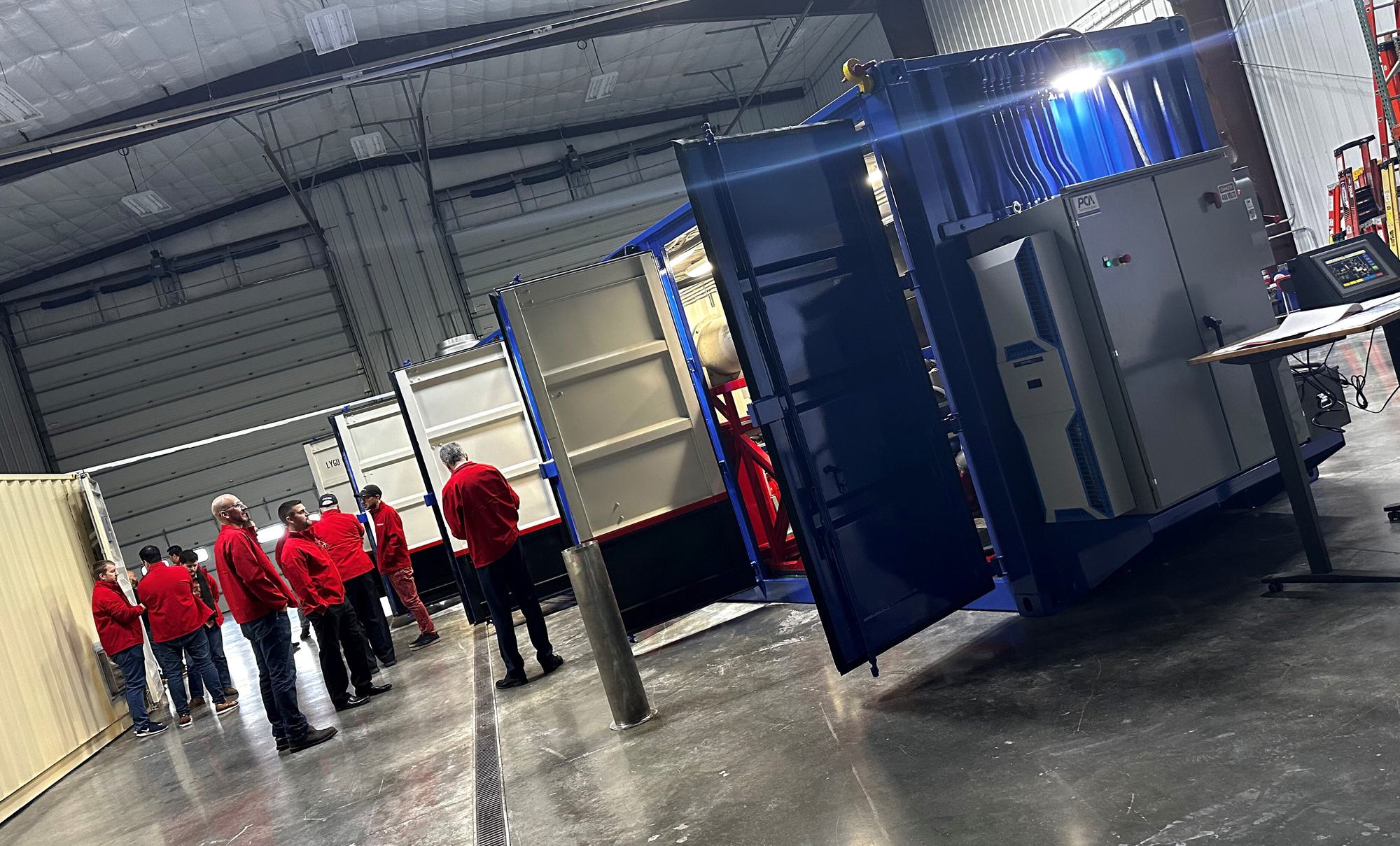
Part of a pilot system that uses supercritical water oxidation to destroy PFAS and other organic contaminants in sewage sludge. Besides designing PFAS removal systems for drinking water, Hazen is also exploring innovative ways to help wastewater utilities tackle PFAS in wastewater effluent and sludge.
Hazen, for its part, continues to refine its modeling tools to help clients more quickly and accurately gauge the costs and challenges of PFAS removal—and not just for drinking water systems. If the EPA designates some PFAS as hazardous substances, solid waste containing the chemicals could become expensive to manage. The firm is researching technologies that could be used to destroy PFAS in treated sewage sludge.
“Utilities are facing some very tough challenges with PFAS right now,“ Hazen’s Bret Casey said of the new rule. “But we've been planning for this. We have the resources and the people to help them adapt to this new landscape.”
Czar said he’s constantly scanning the horizon for what else could come up. The design for the expanded facility left space for a system that could remove a pollutant called 1,4-dioxane, for example, just in case regulatory changes require it.
“These emerging contaminants are just that: by definition, emerging,” Czar said. “Which means there will be others. They never stop. We used to have a wastewater treatment plant superintendent who would say, ‘A clean world ain’t cheap.’ And it’s getting more expensive.”
“But I get it, and at its core, I agree with it,” he added of the regulatory climate. “I’m hoping smart people are out looking for stuff like that. It might help me and my family.”
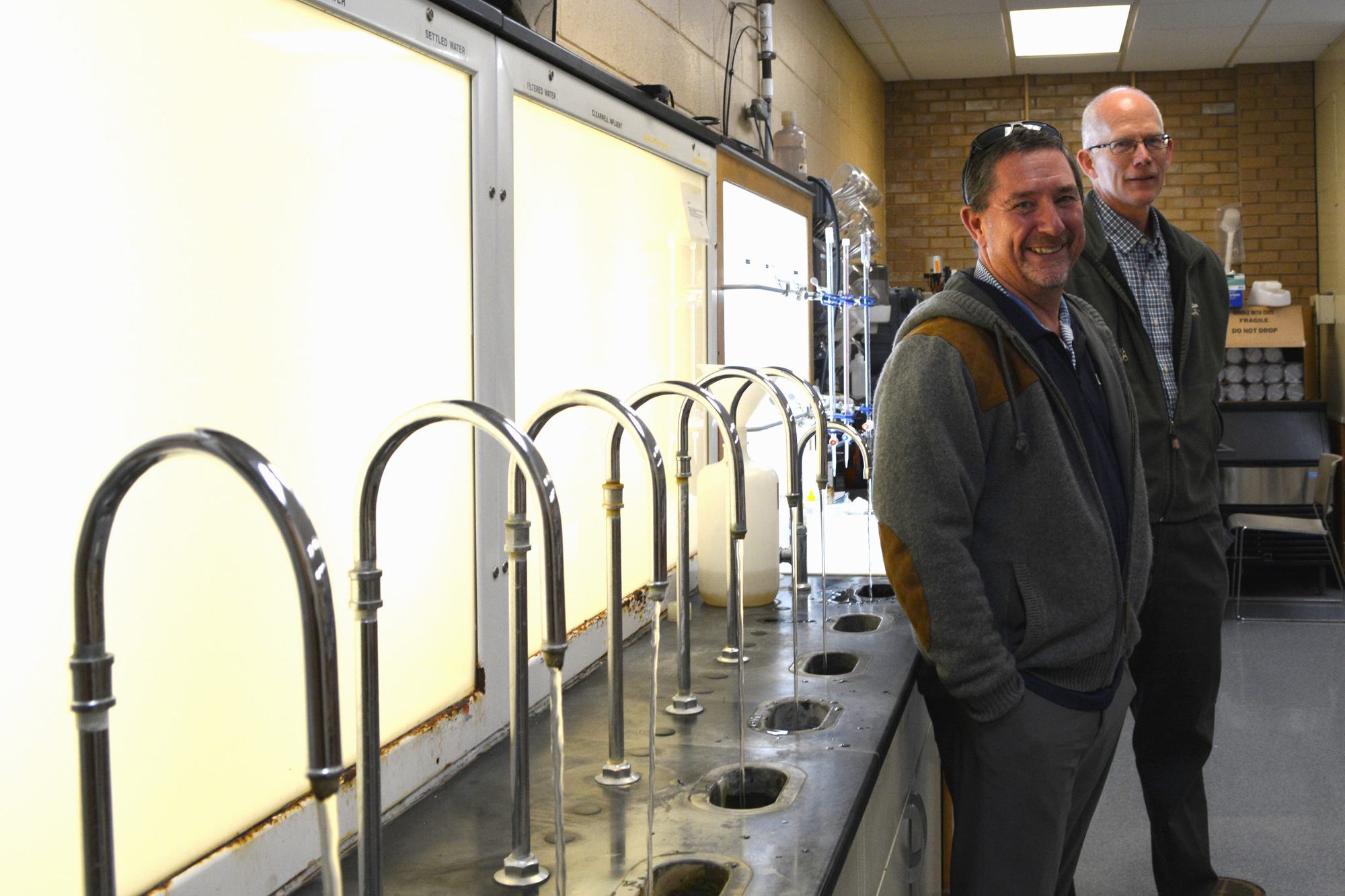
Sanford Assistant City Manager Victor Czar (left) and Utilities and Engineering Director Paul Weeks (right) inside the lab for testing and monitoring water quality at the Sanford Water Filtration Facility.
